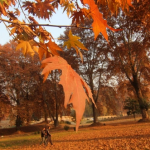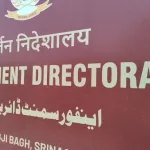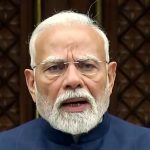Jhiri Mela has captured the public imagination as the convergence of people from different states besides the local people from Jammu region who venerate Baba Jitoo and his daughter Bua Kodi, incarnation of the Goddess as their deities. Baba Jitoo holds the dual stature among the masses. One is that of the icon who sacrificed his life and clan for the farmer empowerment and two, he is considered as the divine figure. The reason being that the sacrifices he made cannot be expected from the common people. From centuries Jhiri located in Jammu has evolved as the nerve centre of socio-cultural moorings of the farmers representing their economic aspirations. This has taken the shape of a fair that acts the representative of the place consciousness and aesthetics of Jammu that defied landlord tyranny. If seen from the market perspective in the current times, it can be easily concluded that Jhiri Mela that is held every year during the onset of winters is the model of cultural renaissance through economic well- being of the farmers, depicting villages as the rudimental elements of resource generation and innovation. Jhiri in Jammu is a landmark destination that needs no introduction. The reason has been clearly explained above. It has acquired religious sanctity due to the sacrifice made by Baba Jitoo. This place houses the Samadhi of Baba Jitoo and his daughter Bua Kodi besides their relics that include the well and other temples that continue to exist till date from the times of this legendary farmer warrior, who sacrificed everything for farmer welfare. It is not only the centre of tourist gaze but people who consider visiting Jhiri as a lifetime pilgrimage. This year the Jhiri Mela has disappointed the pilgrims who arrive with piousness in their mind and seek the blessings and strength from Baba Jitoo and Bua Kodi. The roads that lead up to the Jhiri Mela site were congested with no proper arrangement for parking leading to traffic jams. What was more disappointing was the stalls that were installed. They lacked ambience and the quality to woo the pilgrims. The items being sold were substandard and had nothing to do with the local culture or the traditions of Jammu and other places. It would have been good if the artisans from various parts of India and Jammu’s rural segments were invited to install stalls and depict their skills so that it carried a message. After all, the objective of the Jhiri Mela is to assemble the rural artisans and farmers who indulge in crafts that are peculiar to their village eco-system. What was instead given space was the Bone China items that are not in sync with the rural craftsmanship. It would have been better to install various stalls to at least sensitize the masses about the tourist destinations having cultural and heritage significance in Jammu region. It was missing. By installing mere swings for the children is not going to serve the purpose. There is a need to invite the people having culinary skills and having expertise in local cuisine. Not only that, the states from Northern India must be involved to the best possible level. So that they can showcase their culture, heritage, cuisine, farming skills to sensitize the pilgrims and tourists who visit Jhiri. Department of Tourism, Department of Agriculture and all allied departments must collaborate professionally in Jammu and Kashmir to present an integrated show at Jhiri Mela. It must be internalized that Jhiri Mela is already well placed in public consciousness. What it needs is comprehensive marketing and segmenting besides a rural tourism roadmap blended with cultural and heritage tourism. This year the Jhiri Mela has failed to impress the tourists and visitors. It needs a well thought out model that upholds its sanctity and at the same time showcases the rural culture in a professional manner without violating its place of consciousness and aesthetics. It needs to be managed and organized professionally. Jhiri Mela must not look like a Sunday market but a well organized fair that showcases all elements of rural empowerment and ways and means for economic multiplier effect.








